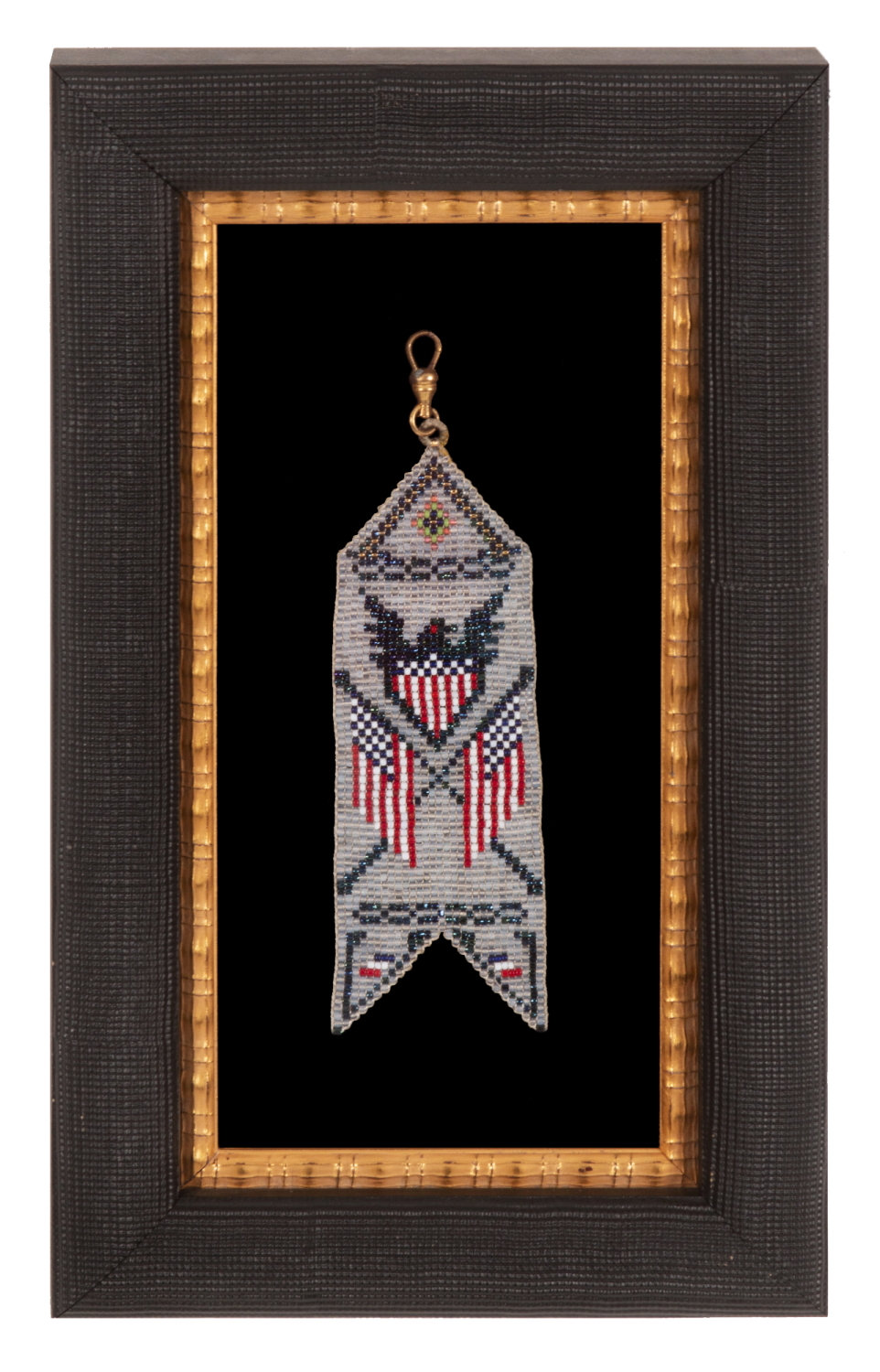


| NATIVE AMERICAN BEADED WATCH FOB WITH A STYLIZED FEDERAL EAGLE & SHIELD AND CROSSED AMERICAN FLAGS, circa 1915-1920’s |
|
| Web ID: | pat-788 |
| Available: | In Stock |
| Frame Size (H x L): | 10.25" x 6" |
| Flag Size (H x L): | 5.75" x 1.5" |
| Description: | |
| Native American beaded pocket watch fob with a silver ground, on which appears a stylized, wedge-shaped device that combines a federal eagle & shield, in red, white, and blue, resting in the vortex created by crossed American flags. Flanking above and below are geometric borders and decoration that incorporate gold, copper-orange, and seafoam teal. All of the above are microbeads. Watch fobs like this were Indian-made for the tourist trade and patriotic styles were produced for an audience of Civil War veterans. While it could be that the flag’s 18 stars and 9 stripes send a Southern-Exclusionary message, it is more likely that their count bears no particular meaning, and is rather simply a decorative representation of patriotic symbols. There is a brass clasp at the top, affixed with a fabric-covered ring. Watch fobs were worn on a pocket watch like a modern key fob might be attached to keys, except in this case became a fanciful clothing accessory that would be draped outside the pocket of a coat or vest. Mounting: The fob has been hand-stitched to its background of 100% cotton twill, black in color. The two-part frame consists of a black, shadowbox style molded the convex face and a textured surface, 2 which a gilded, ripple profile molding was added as a liner. The glazing is U.V. protective acrylic (Plexiglas). Condition: Excellent. |
|
| Video: | |
| Collector Level: | Beginners and Holiday Gift Giving |
| Flag Type: | |
| Star Count: | |
| Earliest Date of Origin: | 1915 |
| Latest Date of Origin: | 1920's |
| State/Affiliation: | |
| War Association: | WW 1 |
| Price: | $950 |
| E-mail: | info@jeffbridgman.com |
 |
|